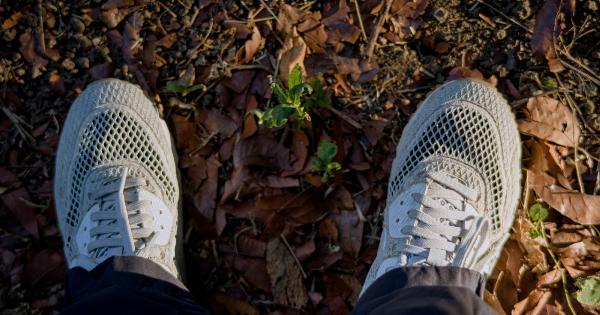Calluses are thick and hardened patches of skin that form as a result of continuous friction or pressure on a specific area of the body. Although they are usually not a cause for concern, calluses can be uncomfortable and unsightly.
If left untreated, they can become painful and may cause more serious complications. Fortunately, there are several effective remedies that can help get rid of calluses and promote healthy skin.
1. Soak and exfoliate
Soaking your callused skin in warm water can help soften it, making it easier to remove. Add a few tablespoons of Epsom salts or a mild soap to a basin of warm water and soak your feet or hands for about 10-15 minutes.
After soaking, gently exfoliate the affected area using a pumice stone or a scrub brush. This helps remove dead skin and reduces the thickness of the callus.
2. Apply moisturizers
Keeping the skin moisturized is essential for preventing and treating calluses. After soaking and exfoliating, dry the area thoroughly and apply a moisturizing cream or lotion.
Look for products that contain ingredients like urea, salicylic acid, or glycolic acid, as these help soften and smoothen the skin. Regular moisturization helps prevent the callus from becoming harder and more painful.
3. Use padding or insoles
If your callus is caused by friction from ill-fitting footwear, using padding or insoles can provide relief and prevent further damage. You can find various types of padding and cushions available at drugstores or online.
These materials help to distribute pressure more evenly and reduce the friction that leads to callus formation.
4. Avoid excessive pressure or rubbing
To prevent calluses from worsening or recurring, it’s important to avoid any activities or behaviors that put excessive pressure or rubbing on the affected area.
For instance, try to wear well-fitting shoes that provide adequate support and cushioning. If you participate in sports or activities that may cause friction, wearing protective gear or using appropriate equipment can help.
5. Apply over-the-counter treatments
There are several over-the-counter treatments available for calluses, such as medicated pads or liquid solutions. These products often contain salicylic acid, which helps soften the callus and promote its gradual removal.
Follow the instructions on the packaging carefully and avoid using these treatments on open or infected skin.
6. Seek professional help
If home remedies and over-the-counter treatments do not provide satisfactory results, it may be necessary to seek professional help.
Dermatologists, podiatrists, or foot care specialists can offer more advanced treatments for calluses, such as prescription-strength creams, custom orthotics, or even minor surgical procedures to remove stubborn calluses.
7. Maintain good foot hygiene
Cleanliness and good foot hygiene play a crucial role in preventing and treating calluses. Wash your feet regularly, making sure to dry them thoroughly, especially between the toes.
Moisture and warmth create an ideal environment for callus formation and bacterial growth. Additionally, trim your toenails properly to avoid any additional pressure on the surrounding skin.
8. Opt for socks and shoes made of breathable material
Wearing socks and shoes made of breathable materials can help prevent calluses. Synthetic materials trap moisture and heat, increasing the risk of callus formation.
Instead, choose socks made of cotton or moisture-wicking fabrics to keep your feet dry and reduce friction. Likewise, opt for well-ventilated shoes that provide ample room for your toes.
9. Use callus pads or cushions
Callus pads or cushions are adhesive pads that can be applied directly onto the callused skin. These pads provide extra cushioning, reduce pressure, and prevent further irritation.
They are especially useful for calluses that are located on weight-bearing areas of the foot or areas that experience repeated friction.
10. Practice regular foot exercises
Exercising and stretching your feet regularly can help prevent callus formation.
Simple exercises like picking up marbles with your toes, rolling a tennis ball under your foot, or stretching your calf muscles can improve the overall health and flexibility of your feet. Strong and flexible feet are less prone to calluses and other foot problems.






























